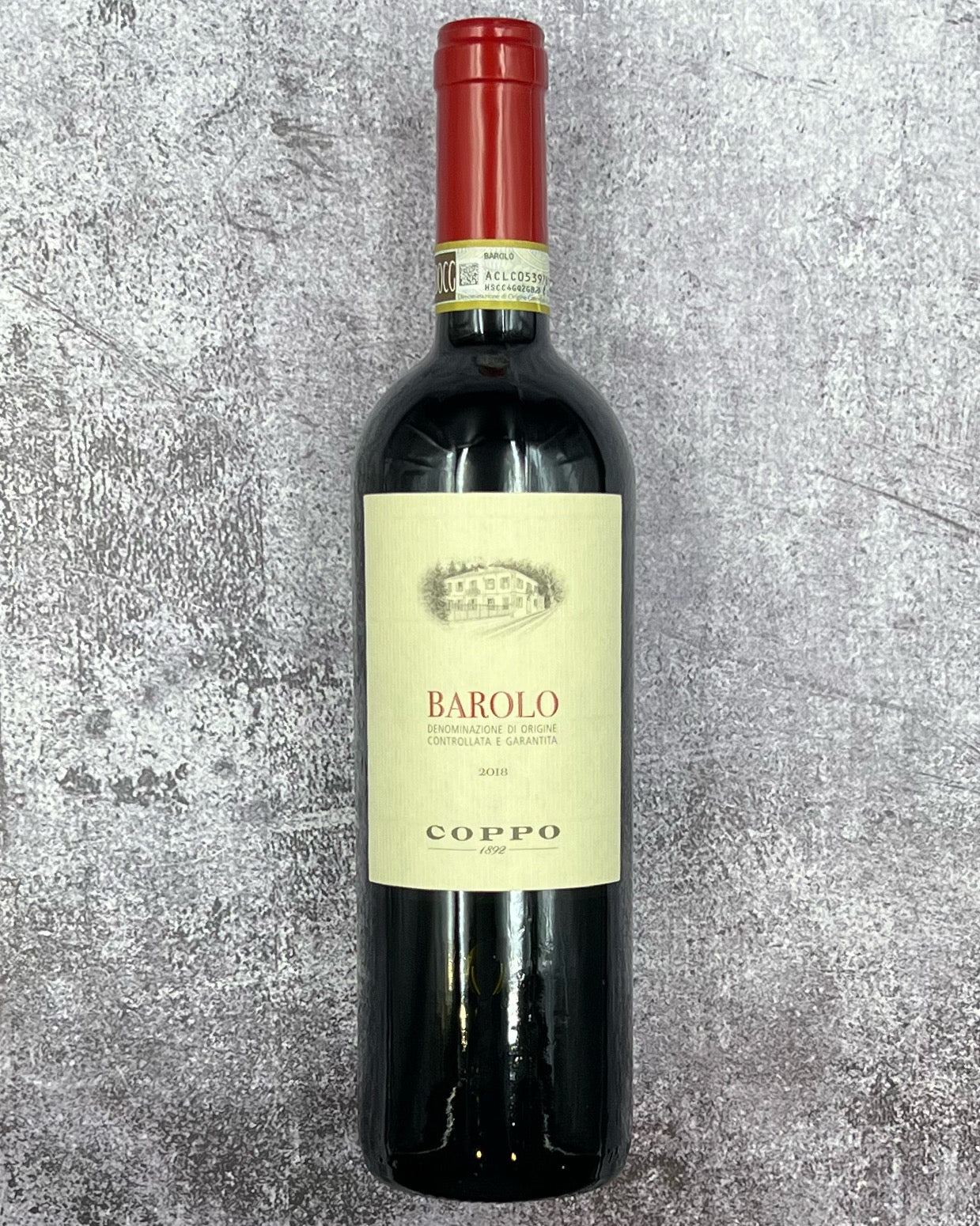From: Piedmont, Italy
Varietal: Nebbiolo
Taste & Critical Acclaim:
(Winemaker Notes) Scorched earth, baking spice, and red berry aromas emerge from the glass. The savory palate offers red cherry, clove, and tobacco alongside dusty tannins.
Critical Acclaim: JS 92 James Suckling
A bright and rather fluid surface-feel to this now, but there’s a tight bead of spicy, pomegranate-like red fruit and firm tannin lurking underneath. Quite an astringent style here and it will need plenty of time, but there’s enough there to merit holding this until around 2025.
Pairing: Pair with baked beef shank, braised veal cut, baked lamb with potatoes. Some other fantastic and traditional pairing options include Brasato al Barolo (braised veal, lamb, or wild boar) and truffle dishes like traditional tajarin pasta with rich mountain butter, fonduta of strong cheeses, and even fried egg with a runny yolk – shaved liberally with decadent Alba White Truffle. Duck also works fabulously as a pairing option (check out the recipe below), as well as prime rib, pizza, or charcuterie.
Slow Roasted Duck With Orange-Sherry Sauce
Recipe from Greg Sonnier
Adapted by Pableaux Johnson
About. Piero Coppo founded the winery in 1892 in the town of Canelli, in Piedmont, establishing himself as a top producer of Moscato. Piero was succeeded by his son Luigi, who expanded the company to include other classic still and sparkling wines from Piedmont, made with the native varietals of the area. Luigi also provided his winery with the facilities and equipments needed to compete in the difficult, but growing, post-war market. Today, Piero's four grandsons manage the company, successfully integrating new styles with traditional viticulture.
Just after the loss of their father Luigi in 1984, the brothers decided to focus on Barbera, releasing their own interpretation of this local grape. The prestigious Pomorosso was born, emerging as the model of the "Modern Style" Barbera, aged in oak and with unmistakable personality. Barbera, a truly native varietal, soon became the pride of the entire region.
The four brothers Piero, Gianni, Paolo and Roberto have set an ambitious goal: to resurrect the traditional red varietals from the Asti region, and to produce serious white wines with aging potential. This is a new generation of winegrowers with a new way of viewing agriculture. Although they are considered to be "Barbera specialists", they also produce an outstanding Moscato d'Asti and an excellent Gavi.
Because of its historical significance, Coppo is among the few wineries allowed to vinify Nebbiolo to become Barolo outside of the wine’s strict production area. The vineyards are located in the South of Asti with Southern exposure. The soil is composed of calcareous clay marl with the prevalence of silt between the altitude of 650-820 ft.
Estate. The historical underground wine cellars of Coppo are a UNESCO World Heritage site. They are part of the network of underground cathedrals, a temple of wine dedicated to its history and the hard work of their history. Built beginning in the late 18th century, initially intended as small cellars to conserve wine, they were expanded from 1800-1900 to what they are today. The historical wine cellars of Coppo extend under the hill of Canelli for a total of 5 thousand square meters (16,400 ft) and a depth that reaches 40 meters (130 ft).
Vinification. Harvest begins with a strict selection of vineyards of the healthiest, ripest grapes hand collected in 40lb picking baskets. The maceration with the grape skins is short, with soft pumping over the skin cap. Full malolactic fermentation takes place and aged 36 months in large oak casks.
Now, if you were confused after reading the above sentence that states, “Because of its historical significance, Coppo is among the few wineries allowed to vinify Nebbiolo to become Barolo outside of the wine’s strict production area.” We found an article that’ll put that little mic drop in context.
Coppo and Barolo: history and tradition
By The Grand Wine Tour, published May 02, 2022

